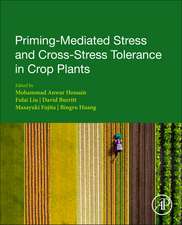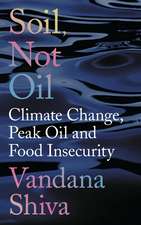The World Economy: Growth or Stagnation?
Editat de Dale W. Jorgenson, Kyoji Fukao, Marcel P. Timmeren Limba Engleză Hardback – 23 noi 2016
Preț: 1010.53 lei
Preț vechi: 1175.03 lei
-14% Nou
193.37€ • 206.77$ • 161.22£
Carte tipărită la comandă
Livrare economică 18 aprilie-02 mai
Specificații
ISBN-10: 1107143349
Pagini: 596
Ilustrații: 102 b/w illus. 69 tables
Dimensiuni: 158 x 235 x 35 mm
Greutate: 0.96 kg
Editura: Cambridge University Press
Colecția Cambridge University Press
Locul publicării:New York, United States
Cuprins
1. The new world order Dale W. Jorgenson; 2. US Economic Growth – retrospect and prospect: lessons from a prototype industry-level production account for the United States, 1947–2012 Dale W. Jorgenson, Mun S. Ho and Jon D. Samuels; 3. The structural causes of Japan's lost decades Kyoji Fukao, Kenta Ikeuchi, Hyeog Ug Kwon, Young Gak Kim, Tatsuji Makino and Miho Takizawa; 4. Growth and stagnation in Europe Bart van Ark and Mary O'Mahony; 5. LA-KLEMS: economic growth and productivity in Latin America André Hofman, Matilde Mas, Claudio Aravena and Juan Fernández de Guevara; 6. On China's strategic move for a new stage of development – a productivity perspective Harry X. Wu; 7. Productivity growth in India under different policy regimes Deb Kusum Das, Abdula Erumban, Suresh Aggarwal and Sreerupa Sengupta; 8. Is mining fuelling long-run growth in Russia? Industry productivity growth trends in 1995–2012 Marcel P. Timmer and Ilya B. Voskoboynikov; 9. Intangibles, ICT and industry productivity growth: evidence from the EU Carol Corrado, Jonathan Haskel and Cecilia Jona-Lasinio; 10. Do intangibles contribute to productivity growth in East Asian countries? Evidence from Japan and Korea Hyunbae Chun, Miyagawa Tsutomu, Hak Kil Pyo and Tonogi Konomi; 11. BEA/BLS industry-level production account for the United States: integrated sources of growth, intangible capital, and the US recovery Steven Rosenthal, Matthew Russell, Jon D. Samuels, Erich H. Strassner and Lisa Usher; 12. Measuring human capital: country experiences and international initiatives Gang Liu and Barbara M. Fraumeni; 13. A half century of trans-Pacific competition: price-level indices and productivity gaps for Japanese and US industries, 1955–2012 Dale W. Jorgenson, Koji Nomura and Jon D. Samuels; 14. Searching for convergence and its causes – an industry perspective Robert Inklaar; 15. The rise of global manufacturing value chains: a new perspective based on the World Input-Output Database Marcel P. Timmer, Bart Los and Gaaitzen J. de Vries.
Recenzii
'Dale Jorgenson and his collaborators have, over decades, produced consistent databases for productivity analysis. The endeavor is invaluable because what matters in the long-run for the country's - and the world's - standard of living is supply factors such as the quality and quantity of labor and capital. This volume contains industry-level analysis for a number of countries. It reveals, for example, that Japan, having tolerated inefficient sectors to persist, still has room for growth.' Fumio Hayashi, National Graduate Institute for Policy Studies, Tokyo
'The papers collected in this volume are both timely and highly relevant. They draw a broad picture of economic growth and its determinants, using a coherent framework and well-founded methodology. The proposed work brings together, in a unique way, advances in measurement and economic analysis - two strands of work that are too often conducted in separation. The authors represent a select set of researchers with excellent track records in the field and I recommend the volume as a most valuable reference for students, scholars, and analysts alike.' Paul Schreyer, The Organisation for Economic Co-operation and Development Statistics Directorate
Descriere
The balance of the world economy is shifting away from the established economies of Europe, Japan, and the USA, towards the emerging economies of Asia, especially India and China. With contributions from some of the world's leading growth theorists, this book analyses the long-term process of structural change and productivity growth across the world from a unique comparative perspective. Ongoing research from the World KLEMS Initiative is used to comparatively study new sources of growth - including the role of investment in intangible assets, human capital, technology catch-up, and trade in global value chains. This book provides comparisons of industries and economies that are key to analysing the impacts of international trade and investment. This makes it an ideal read for academics and students interested in understanding current patterns of economic growth. It will also be of value to professionals with an interest in the drivers of economic growth and crisis.





















